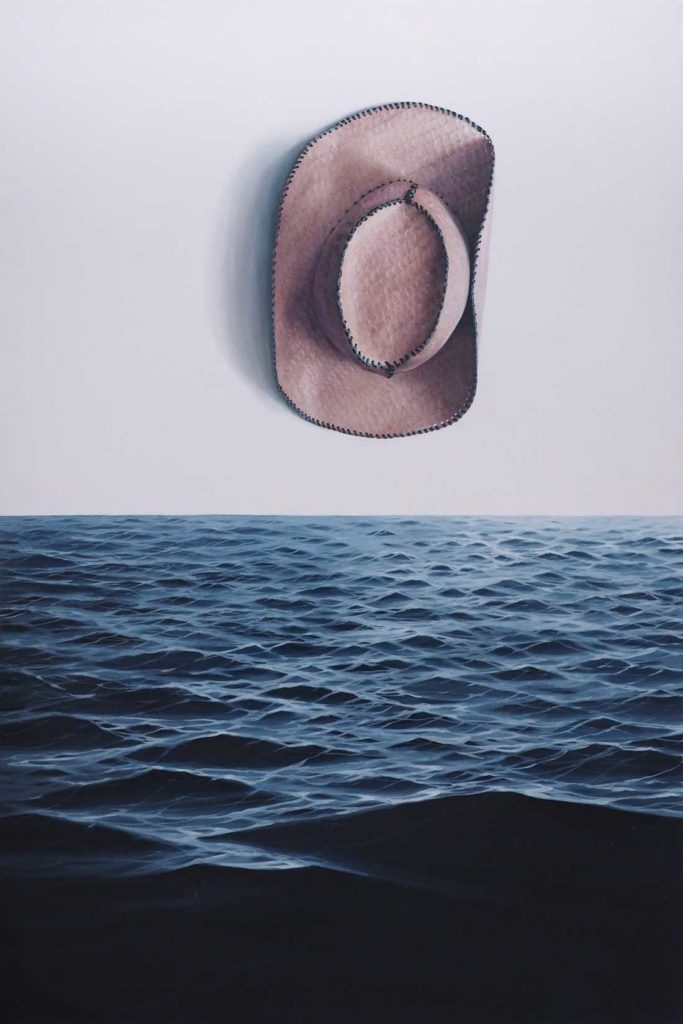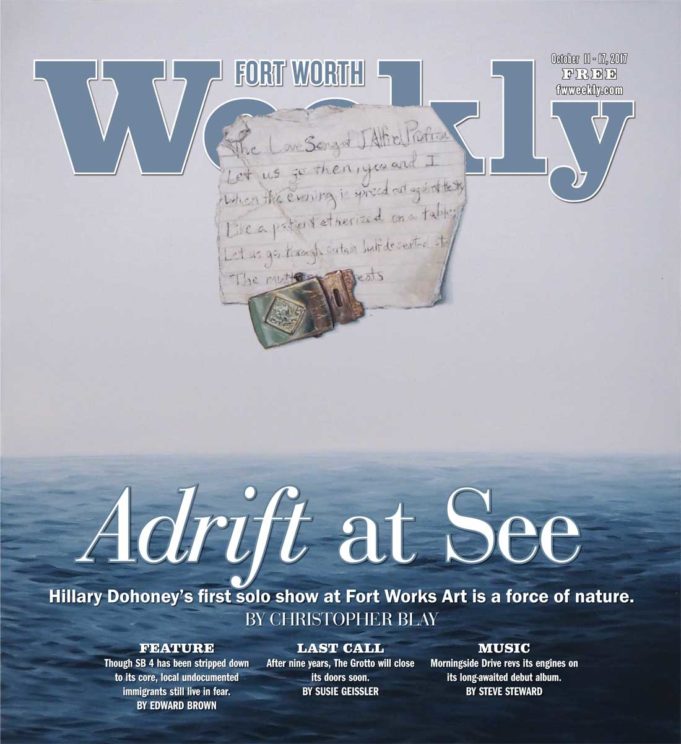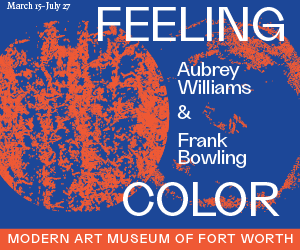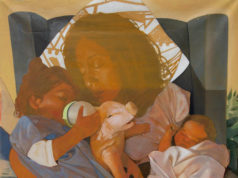Nature can be an overwhelming and terrifying force, its vast expanses full of awe. The mere suggestion of the sea, even in a painting, strikes at the core of our aloneness in the greater cosmic ocean, reducing us to the specks of existence that we are, adrift in an even more vast and endless void.
Hillary Dohoney’s paintings exist as a glimmer of hope between water’s obliterating power and its life-affirming, calming presence. The 24-year-old Fort Worth native studied painting at Trinity University in San Antonio, and through their partnership with the Musée d’Orsay and the Louvre she was both a guest docent and official copyist, respectively. Her meticulously painted brushstrokes, which earned her those distinctions, are reflected in the nuances of static waves and calm seas depicted in Adrift, her current solo exhibition at Fort Works Art. Rather than erasing the endlessness of the horizons in her compositions, the brushstrokes render the waves more pronounced and alienating, and we become the lone pondering rückenfigur in Caspar David Friedrich’s “Wanderer above the Sea of Fog,” standing in sublime contemplation of the scenes we observe.
Dotting the gallery walls in Dohoney’s Becalm series, several small circular canvases match the heft of the larger works in the show, including the paintings that lend their title to the exhibition. While the Adrift series relies on scale to literally envelop viewers, the cameo paintings in Becalm focus on surface details. In them there is a longing and solitude reminiscent of a ship moored by the stillness of the wind, describing the nautical term Dohoney uses for this collection of paintings.
Dohoney has said that her obsession with bodies of water comes from an early frustration with trying to copy what she saw of Lake Whitney from her grandparents’ lake house. Her many attempts at depicting the nuanced surfaces led her to continue the process over the years, and it became de facto therapy for her anxieties, she said. Because of this sometimes-disconcerting anxiousness, Dohoney shifted the focus of her first solo exhibition to her empathy for others and to what she describes as the shifting embodiment of the concept of home. Hierth, the Welsh term that contains this sentiment, is most closely related to homesickness and nostalgia, and Dohoney’s interviews with immigrants at Refugee Services of Texas inspired these paintings.
In her Hierth series, the title of each piece is the name of the interviewee. Dohoney requested a keepsake from each of them to use in the paintings, and she listened to each account while making her pieces. Using the seascape as a template, Dohoney places a very convincing illusion of keepsakes in the sky above the seas, employing trompe l’oeil — the objects, complete with their shadows, seem to rest atop the flat surfaces of the paintings.

The wall labels reveal the content of each interview. In general, I sometimes read added information as overselling, preferring to “read” the object itself, rather than relying on interviews and texts to explain what I’m looking at. My point is that the Hierth paintings could stand on their own, because we’ve seen these images before and heard these tales over the past few years, stories of refugees on boats, fleeing conflict, keepsakes and items of clothing awash on distant shores, captured in photographs that encapsulate the anguish of being uprooted, adrift, and lost at sea. This is true of Haitians on boats, Cubans on makeshift rafts, Africans and Syrians alike, risking everything in barely seaworthy vessels, desperate for calmer shores. Dohoney’s canvases convey the weight of these circumstances even at first blush and are a laudable addition to the national discourse surrounding refugees.
Adrift is on view through October 28, although some of the pieces in the Becalm series are being replaced when they are sold, which is unfortunate. The practice of removing or replacing art while an exhibition is still up is the same as republishing the text of a speech with edits that weren’t in the original draft — it is a different version of the original show, and switching pieces in and out is not the standard practice of art galleries for obvious reasons.
It is also unfortunate that Adrift is paired with 40 under 40, another exhibition worth checking out at FWA. The effect of simultaneously opening two equally ambitious shows in the same timeframe diminishes the attention that both should garner. Curated by Maggie Adler, assistant curator at the Amon Carter Museum of American Art, 40 under 40 is full of stellar pieces, including Alicia Eggert’s “Above and Beyond,” Shelby Cunningham’s “Sick in Bed for a Week,” and Darcie Book’s “Every Cloud,” among others. Many others.
Dohoney will discuss her work at the gallery on Wednesday, Oct. 11, at 6 p.m.
Adrift
Thru Oct 28 at Fort Works Art, 2100 Montgomery St, FW. Free. 817- 759-9475. @honeydoart












